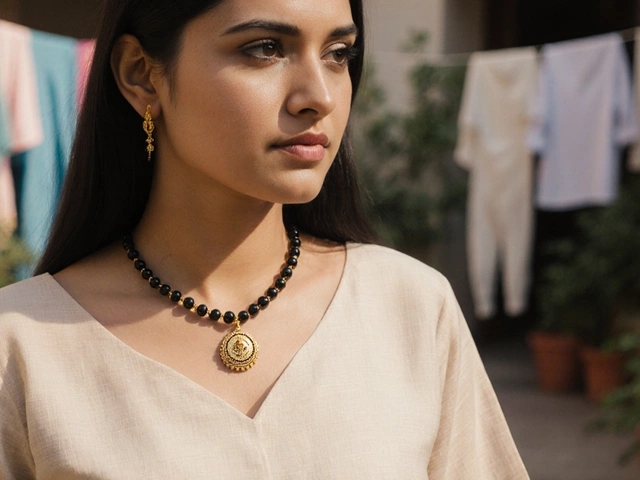Ever wonder what the Bible says about nose piercings? It’s an interesting intersection between ancient texts and modern fashion. If you dive into the Bible, piercings do get a mention, though they're not as straightforward as you might think.
Historically, nose piercings were quite the thing in biblical times, referenced in contexts you might find surprising. They weren't just about style but often carried deeper meanings. These days, the motives might be different, but the intrigue remains the same.
What’s cool is how something as simple as a nose ring can connect us to traditions that go back centuries. Plus, there are tons of designs now to suit every vibe, whether you're trying to make a statement or just want a little extra pop.
- Biblical References to Piercings
- Historical Context of Nose Piercings
- Cultural Significance in Ancient Times
- Modern Interpretations and Misconceptions
- Choosing Your Nose Pin: Tips and Trends
- Pairing Cultural Insights with Personal Style
Biblical References to Piercings
When thinking about the Bible and body piercings, you might picture a strict no-go zone, but that's not really the case if you look closely. The Bible isn’t explicit in banning or condemning nose piercings, which might surprise some.
In Genesis 24:22, Abraham’s servant gives Rebekah a gold nose ring as a gift, who was to become Isaac’s wife. This isn’t portrayed negatively at all, showing that nose rings were accepted gifts in ancient times, particularly within matrimonial contexts. So, if you’re rocking a nose ring, you’re in line with some very ancient fashionistas!
Another mention is found in Ezekiel 16:12, where God, in a metaphorical expression, adorns Jerusalem with jewelry, including a nose ring: "And I put a ring on your nose, earrings on your ears and a beautiful crown on your head." This kind of gives us the hint that nose piercings were symbols of beauty and even divine favor then.
So, what about the modern-day Christian? Many believers interpret these texts as cultural artifacts rather than strict commandments, leaving space for personal choice. It’s more about how it fits into your personal belief system than what the texts say directly.
Interestingly, nose piercings are often more about tradition, family, and personal expression than rebellion in various cultures.
Historical Context of Nose Piercings
Nose piercings have been around longer than you might think. Way back, they weren't just about looking good—these piercings had a whole lot of cultural and even spiritual significance.
Origins in the Middle East
If we trace the origins, the tradition of nose piercings can be tracked back over 4,000 years to the Middle East. Back then, it was common with certain tribes who believed it symbolized wealth and status. In some regions, it was specifically connected with marriage, where a nose ring could be a gift to the bride, symbolizing security and preciousness.
The Biblical Connection
Interestingly, the Bible also nods to nose rings. For instance, in Genesis 24:22, there's a mention of a servant giving a gold nose ring to Rebekah, Isaac's future wife. This act wasn't random. It reflected a custom, showing Rebekah's worth and setting up a connection between antiquity and ornamentation that still fascinates today.
Spread through Trade and Culture
Fast forward a bit, and the practice spread through trade routes to other ancient civilizations, like the Egyptians. Here, too, it was a sign of nobility. By the time it reached India, it transformed again, becoming a staple in bridal wear, and is still wildly popular in Indian cultural traditions—adding to the colorful tapestry of its history.
As times changed, so did the meanings, but the allure never faded. Today, while they might not always indicate wealth or status, nose piercings continue to blend tradition with modern flair, standing out in the fashion world as a nod to a rich historical tapestry.
Cultural Significance in Ancient Times
Nose piercings aren't just a modern-day trend. They've been around for centuries, especially prominent in various cultures across the Middle East and Asia. In biblical times, a nose ring was often more than just a fashion statement; it had deep cultural and even economic significance.
Back in the day, the Bible describes instances where nose piercings were given as gifts. One of the earliest references is in Genesis 24:22, where Abraham's servant gives Rebekah a nose ring as part of a bridal gift. This implies that such piercings weren't just decorative but held a symbolic meaning, possibly indicating status or wealth.
In many ancient communities, a nose ring was a sign of respectability and identity. For example, Bedouin tribes historically used nose rings to signify family ties and social status. In these tribes, a woman's jewelry often belonged to her, providing financial security and representing her family's wealth.
Ritual and Symbolism
Beyond status, nose piercings were also part of religious rituals and symbolisms. In Indian culture, which is home to a variety of practices related to body adornment, nose piercings are linked to the goddess Parvati and associated with marriage. Hindu tradition also suggests that a nose piercing on the left nostril can ease childbirth, as it’s connected to reproductive health.
Exploring ancient cultures reveals that nose piercings served many purposes beyond mere embellishment. They were an integral piece of society’s fabric, speaking volumes about one's identity and societal standing. So, while today a nose piercing might just be about personal style, back then, it was a snapshot of who you were in a community.

Modern Interpretations and Misconceptions
Today, nose piercings are seen as a fun and expressive way to add some flair to your style. While some folks worry they might not be in line with religious views, the Bible doesn't specifically forbid them. It’s more about personal interpretation and individual choices.
In fact, there's a long history of people using piercings as part of their cultural and spiritual practices, so it's often a case of context rather than a strict do-or-don't. Many people worldwide wear nose rings without any religious conflicts, embracing them as part of their identity or fashion.
Common Misunderstandings
A big misconception when it comes to the Bible and piercings is assuming that all body modifications are frowned upon. But if you interpret the texts closely, it’s more nuanced. It’s key to remember that historical contexts have shifted, and what a nose ring symbolizes today may not have the same meaning as it did centuries ago.
Piercings today are often seen as a reflection of modern fashion rather than a spiritual statement. They're personal and, more often than not, a symbol of self-expression rather than rebellion or theological conflict.
Modern Beliefs and Stats
Statistics show a steady rise in the popularity of nose piercings over the years. Did you know that about 19% of people with piercings have chosen a nose piercing, showcasing its widespread appeal and acceptance?
| Type | Popularity (%) |
|---|---|
| Earlobe | 54 |
| Nose | 19 |
| Other | 27 |
With this kind of popularity, it’s clear people don't see nose piercings as risky or controversial. It’s about finding a design that speaks to you—the sky's the limit with what's available in the market!
Choosing Your Nose Pin: Tips and Trends
Picking the perfect nose pin is like choosing a new pair of shoes—it’s gotta vibe with your style and comfort. But where do you start? With so many nose piercings trends out there, it's easy to feel overwhelmed. Let’s break it down.
Know Your Material
First things first, know what materials you’re comfy with. Gold is timeless and hypoallergenic, making it a safe bet for sensitive skin. Silver is another classic but some folks might be allergic to it.
Diamond-studded designs are a go-to for those wanting a little sparkle. Meanwhile, titanium and surgical steel have been trending thanks to their durability and skin-friendliness.
Embrace the Trends
No doubt, trends change fast. Lately, minimalistic designs with little gemstones have been all the rage. They're subtle but chic!
«From a cultural lens, nose pins continue to be a beautiful blend of tradition and fashion,» says designer Nisha Patel.
«It’s amazing how nose pins evolved from a cultural identifier to a global style staple.»
What’s Your Face Shape?
- Round Face: Opt for long, slender designs that create an elongating effect.
- Oval Face: Lucky you—most shapes look good! Play around with studs or hoops.
- Square Face: Go for rounder, softer designs to balance the edges.
Pro Tips
- Consider your daily routine. If you're active, smaller or flat designs might be practical.
- For a secure fit, make sure the nose pin back is snug.
- When in doubt, consult a piercer to find the best size and fit for your nose.
Still not sure? Check what celebs are donning. Follow style icons who rock nose piercings with confidence.
A Quick Look at Popular Materials
| Material | Durability | Hypoallergenic |
|---|---|---|
| Gold | High | Yes |
| Silver | Medium | Varies |
| Titanium | High | Yes |
Choosing a nose pin can feel like a big decision, but with these tips, you’re on the right path. Whether sticking to traditional styles or going full-on funky, remember it's all about expressing you.
Pairing Cultural Insights with Personal Style
Bringing together the rich background of nose piercings with your unique style can be a lot of fun. You’re not just choosing a piece of jewelry; you’re embracing a tradition with a twist that makes it yours.
Understanding the Cultural Underpinnings
Historically, in places like India and the Middle East, nose piercings were much more than fashion accessories. They represented familial status, wealth, and even marital status. Reading into these cultural layers can give your nose pin more meaning and let it tell a story.
Incorporating Personal Style
Finding a nose piercing that reflects your vibe is about balancing cultural aspects with modern design. Are you into minimalist looks, or do you prefer something bold and showy? Here are a few tips:
- For a classic and elegant look, choose smaller nose studs with diamond or simple metal designs.
- If you're going for something trendy, experiments with multiple piercings or unique shapes like spirals or hoops.
- Don’t shy away from mixing styles. Sometimes pairing different metals or designs can set a personal trend.
Maintaining Balance: Trends vs Tradition
It’s not always easy to toe the line between being fashionable and respecting cultural roots. Remember, it's your way of expression. The key is confidence and comfort. Own your look, whether it's inspired by ancient jewelry styles or the latest fashion trend.
| Style | Cultural Influence | Modern Adaptation |
|---|---|---|
| Elegant & Classic | Traditional gold or silver settings | Introduction of diamonds or pearls |
| Bold & Trendy | Heavily adorned with meaning | Innovative shapes and designs |
At the end of the day, how you wear your nose piercing is unique to you. Make it count, make it meaningful, and most importantly, make it you.



